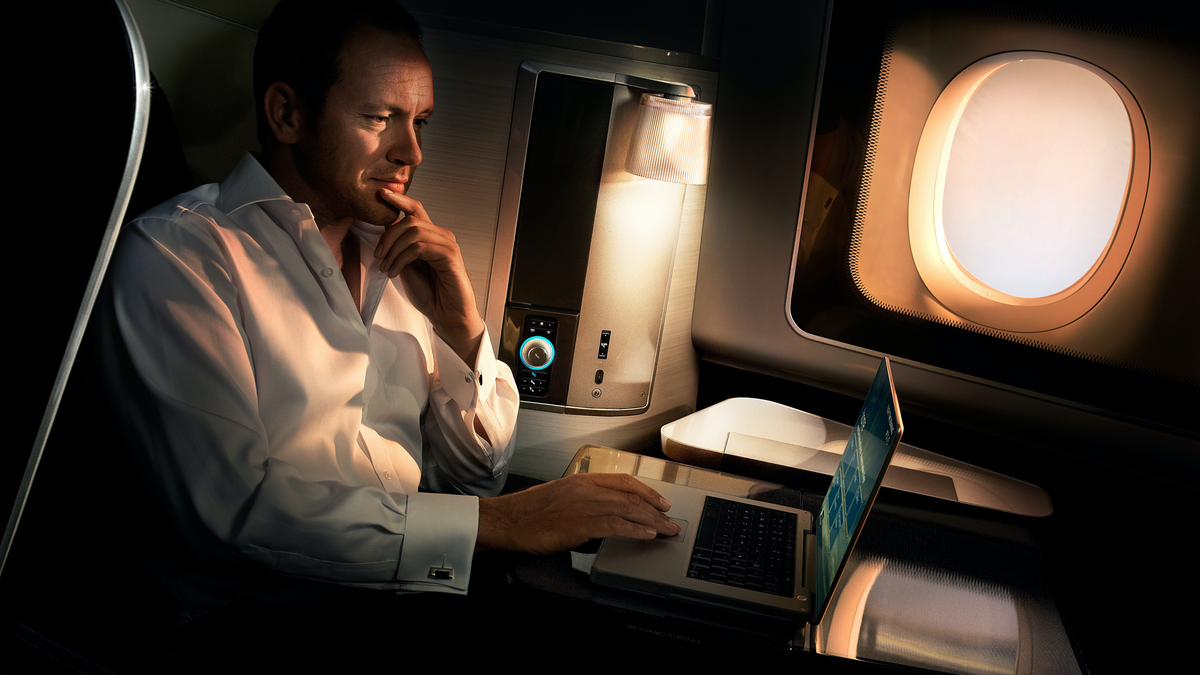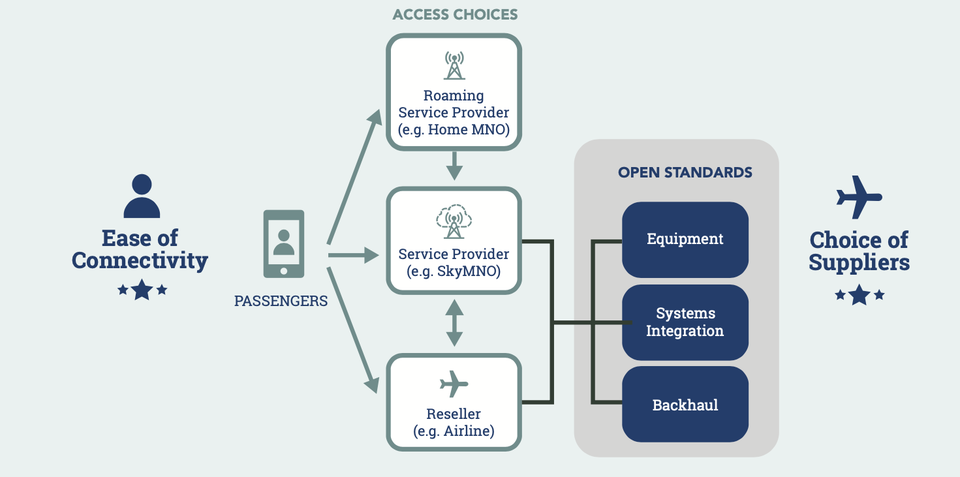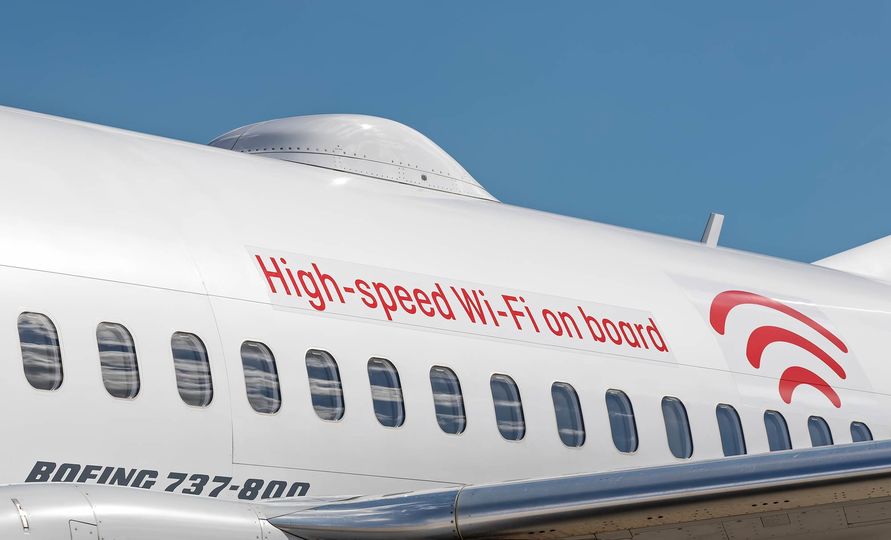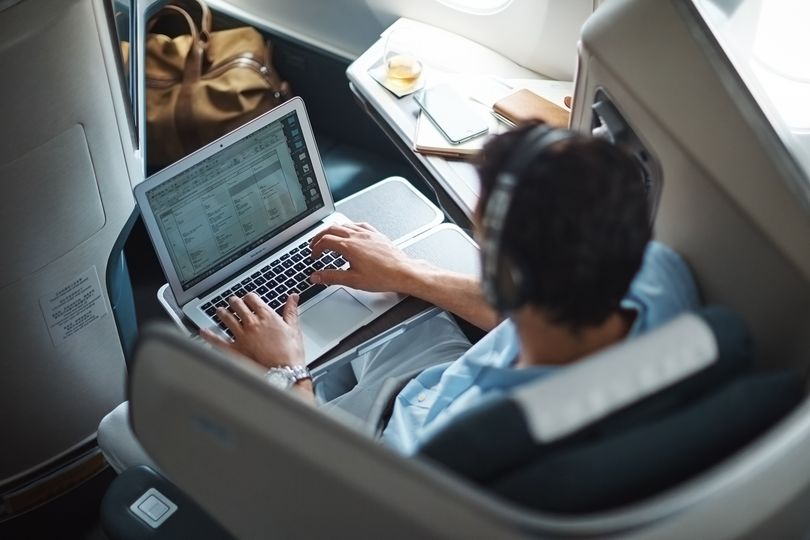Everyone wants better inflight WiFi, and this could be the first step
An alliance between airlines and tech companies paves the path to a smoother, faster and overall better WiFi experience.

Air travel and glitch-free Internet access are often considered mutually exclusive, thanks to the technical difficulties associated with making WiFi work at 40,000 feet.
For the airlines, a satisfying online experience is even more elusive. The hardware, software, maintenance and inability to easily switch service providers combine for a very expensive headache.
But there may be some good news on the horizon – a new era of ground-quality internet connectivity that could save carriers billions of dollars.
The Seamless Air Alliance, a nonprofit group of 30 companies, says its new tech architecture will make inflight connectivity systems modular, with open interfaces and components that can easily be swapped out.
The alliance includes Airbus and Delta Air Lines, with such equipment makers and satellite companies as Panasonic Avionics, Intelsat, Nokia and Vodafone Group. Together, they want to introduce a global standard, using protocols derived from the cellular and WiFi industries.
Jack Mandala, the alliance’s chief executive officer, said that airlines now “have equipment that only works with the provider they’ve chosen.” Universal adoption of the framework, he predicted, could change that.
For passengers, this alliance may change the entire airport experience. Your mobile connection would migrate from one system to another, from the terminal onto the jet bridge and down the aisle to your seat – without the need to log in or pay. No longer would you be restricted to airline movies you’ve already seen, television episodes you’ve already skipped or video games you never wanted to play.
“Today, that experience can be a brand-damaging event for the airline,” Mandala said of onboard internet access. “Passengers are out there on social media, complaining when they can’t get service, and they don’t blame the service provider – they blame the airline.”
He said new internet companies will enter the market, attracted by the unified standards. This will boost competition and quality in an industry that often enrages travelers. “For inflight connectivity,” he said, “the high cost of capacity has been the Achilles heel.”
These new protocols might also save airlines billions of dollars, allowing for “rapid adoption of new technologies in a surgical manner,” the group said Tuesday in a statement.

This means that airlines would be able to manage their WiFi offerings more efficiently, easily changing providers as a new generation of low-Earth-orbit satellite networks come online. These could include offerings from Elon Musk’s Starlink, Softbank-backed OneWeb, and Amazon's Project Kuiper.
A 5% improvement in these areas – based on an analysis conducted over 10 years, with a fleet of 10,000 internet-connected aircraft increasing to 25,500 by 2028 – would boost the value of the inflight connectivity market by US$11.4 billion, according to a 2019 white paper the alliance commissioned.
This would increase to almost $37 billion if customer use rates were to double, along with a 5% improvement in the three other metrics, the study found.
Before you start dreaming of bandwidth, however, here’s a buzzkill: Plenty of key industry players have yet to get involved – including competitors to founding alliance members such as Boeing, Gogo and a slew of top-tier airlines and telcos. Still, Mandala contends that it’s only a matter of time before the industry coalesces around standards that lower costs for airlines.
To become compliant with the standards, most equipment makers will need to modify software, something Mandala, a former Qualcomm executive, contends is “not a big deal,” financially.
“There are market forces at work that are ready to drive down costs, given the capacity that’s coming online,” he said. “Going to these standards will knock down these artificial barriers that’s holding back this big growth in the market.”
Among them: high prices, spotty service caused by bandwidth bottlenecks, the dodgy nature of typing in your credit-card number with a snoopy seatmate five inches away, and the general milieu of glitch behavior encountered when trying to connect on different networks with different devices.
On those flights that offer WiFi access, this friction-filled scenario leaves customer purchase rates well below 10%. Most passengers simply connect to the streaming entertainment delivered wirelessly from servers on the plane. A few even engage in that old fashioned hobby called reading.
This article is published under license from Bloomberg Media: the original article can be viewed here


Qantas - Qantas Frequent Flyer
06 Nov 2014
Total posts 358
Not everyone. I actually dont like the idea of on board wifi. I like to live without internet for a few hours so I can catch up some rest.
04 May 2015
Total posts 261
You still have that option.
05 Sep 2017
Total posts 11
Again "not everyone". I am quite content in a Wi-Fi free zone when flying.
Qantas - Qantas Frequent Flyer - Chairmans Lounge
01 Sep 2011
Total posts 416
I woukdnt go with a sweeping comment that everyone wants better WiFi on a plane. I and many others I know just don't want it at all. Two reasons, I don't want to hear people on what's all calls etcand I want to be out of reach for a few hours.
10 Dec 2018
Total posts 40
100% "NOT everyone" at the time of this post (3 days in) ... but no doubt it will be inflicted upon us. "You still have that option" comments 'deanr' ... we'll see ... as the keyboard warrior beside you with his/her 65" wide-screen laptop, on speaker, reviews his/her extensive collection of 'video music' at 0300 'your current time zone' time. Expect the increasing reporting of flights diverted and met by Police due to drunk, disruptive passengers to be rapidly overtaken by flights diverted and meet by Police due to aggressive, disruptive, ill mannered 'keyboard warriors'. Expect to be 'ringside' at some spirited punch-ups, and land somewhere you didn't intend going, on most flights.
Hi Guest, join in the discussion on Everyone wants better inflight WiFi, and this could be the first step